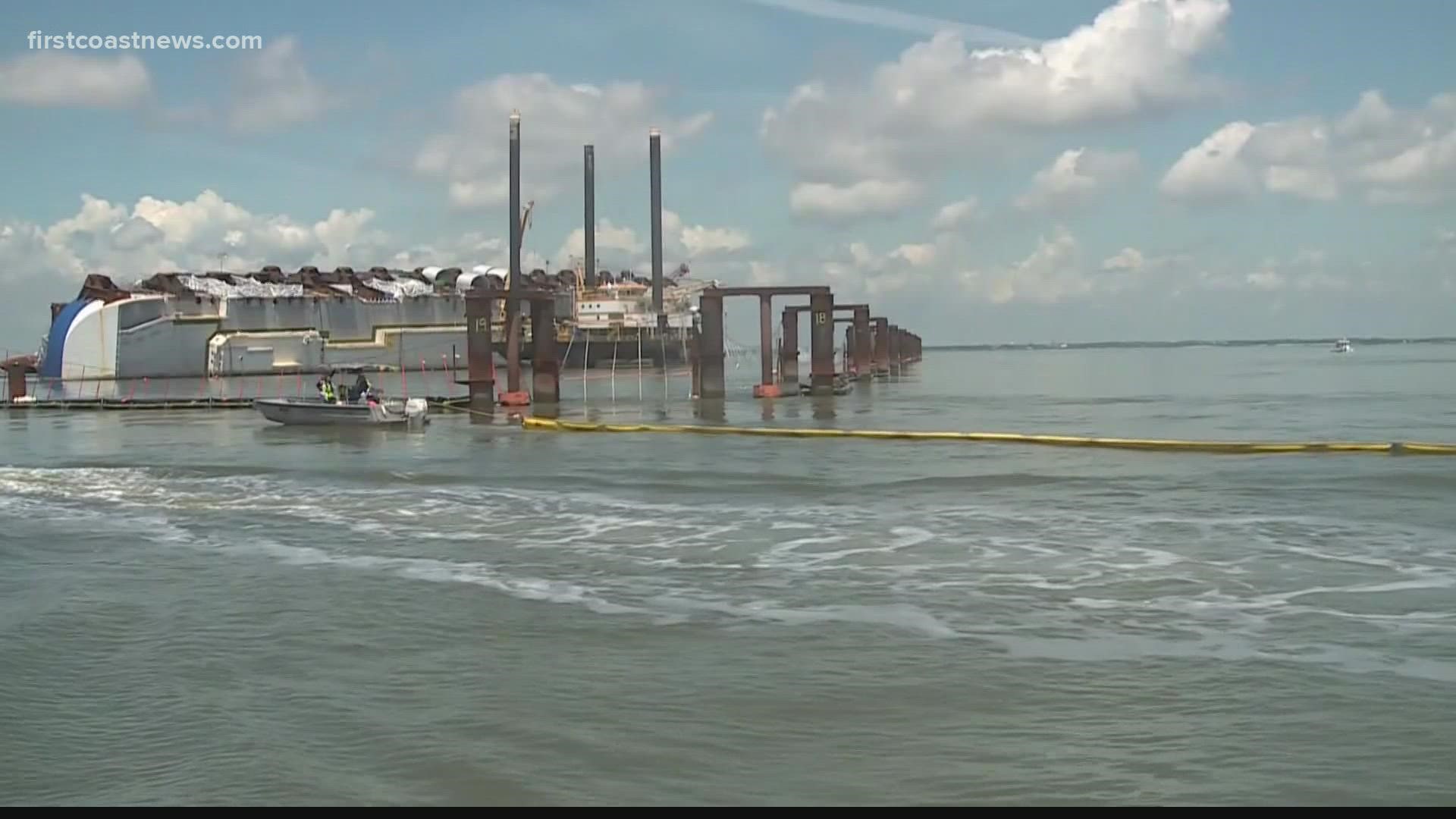JACKSONVILLE, Fla. — For over two years it sat. Now, Glynn County wants restitution of damages resulting from the capsized Golden Ray and its environmental impacts.
The cargo ship capsized Sept. 8, 2019 in the St. Simon Sound. The initial catastrophe was caused by teetering instability, a combination of ballast discharge at sea and cargo shift in port.
A lawsuit was filed by Glynn County in the U.S. District Court in Brunswick last week against GL NV24 Shipping Inc., Hyundai Glovis Co., G-Marine Service Co., Ltd, Norton Lilly International and T&T Salvage LLC.
The lawsuit claims negligence on behalf of all parties involved, specifically, that the vessel was loaded in an unstable and top-heavy manner that violated the 2008 Intact Stability Code.
The suit claims the improper loading led to the vessel's capsize and subsequent discharge of oil and other hazardous substances onto Glynn County property.
'Defendants breached the duty they owed to Glynn County when they failed to exercise reasonable care in loading the Golden Ray, resulting in her capsizing,' reads the complaint.
The complaint alleges that the substances spilled into the surrounding environment have contaminated marine life in St. Simons Sound, its estuaries, adjacent creeks, waters, and marshlands.
The lawsuit argues the defendants are responsible for costs the county continues to incur removing oil from the environment.
Background: What happened?
The trajectory of the Golden Ray from the time it left the Port of Brunswick to the present day is multilayered.
The initial catastrophe was caused by teetering instability, a combination of ballast discharge at sea and cargo shift in port. The blame for that has yet to be assigned – the Coast Guard and the National Transportation Safety Board have yet to issue formal findings.
But the outcome was pretty clear: The two-year-old ship and its 4,200 vehicles were a total loss.
When the plan to cut the ship into eight pieces was announced in February 2020, the Unified Command – composed of the Coast Guard, the Georgia Department of Natural Resources and the “Responsible Party” (ship owner Hyundai Glovis and its insurer, North of England P&I Club) -- said it would be completed before hurricane season, in June 2020.
Cutting didn’t begin until November 2020, but even then, the Unified Command said it would still take just eight weeks to complete. Twenty-four hours for each cut. Done before New Year’s Day.
The Coast Guard and the salvage company, T&T Salvage, now acknowledge the 24-hour estimate was – well, optimistic. Some cuts took months to complete.
The last piece of the ship was removed in October 2021.

